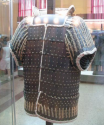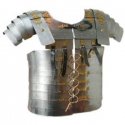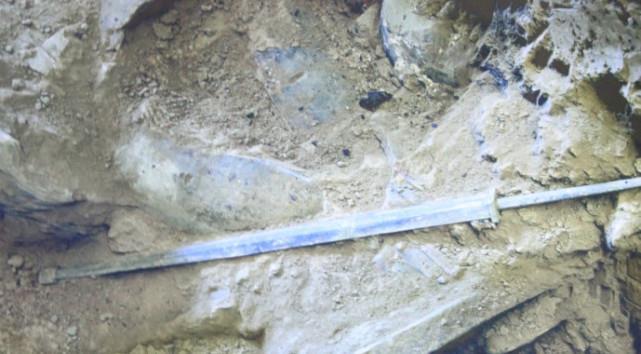It is a bit demeaning to say the Mongols are from a later era and the people of the steppes did not have an advanced civilization even back then. It was quite common for the Chinese people to fight the Xiongnu, the Mongol's precursors, in the Warring States period and they had significant issues with them. Why do you think the first Emperor put so many people working on the Great Wall? There are vestiges of Ordos civilization culture tombs with steppe warlords entombed with their horses, weapons, scale armor, and the like. They were quite advanced in bronze making technology and they were part of a major chain of trade.
With regards to the Chinese Qin dynasty era weaponry it was quite advanced but let's not diminish Western technology or military might from back then either. Alexander the Great lived during much the same era and he managed to conquer the Persian Empire which was itself quite sophisticated. The Qin did have iron weapons, but you have to remember they managed to do manufacture them because they used iron with high phosphorus content, which has a lower melting point, but is more brittle than carbon steel. So their iron weapons were good in that they were cheap and widely available, but were actually worse in terms of performance than well made bronze weapons. It was basically a numbers game. Heck, the Hittites had iron weapons, but eventually better bronze manufacturing methods meant that the Egyptians could still hold them at bay and even invade their territory. Not a lot of people know about this but only until many centuries later was steel of high enough quality to be substantially better than bronze. Unless you had access to some rare iron deposit like meteoric steel or something like that. There are daggers made of meteoric steel in really early Egyptian tombs for example.
The crossbow was a major invention of the time in China though. Also the civil engineering techniques of the Qin were highly advanced. Before the Qin build that massive army they went through one of the periods of highest population and productivity growth in history. They irrigated a lot of previously uncultivated lands with major engineering projects where they diverted water to increase food production. They gave plots of land for people to cultivate. This meant that there was a large migration into Qin. Also the Qin forced people to marry at a really young age and gave them plots of land to both till and make a house. This resulted in a huge population boom which provided them with the manpower to field that huge army 2-3 generations later.
With regards to the Chinese Qin dynasty era weaponry it was quite advanced but let's not diminish Western technology or military might from back then either. Alexander the Great lived during much the same era and he managed to conquer the Persian Empire which was itself quite sophisticated. The Qin did have iron weapons, but you have to remember they managed to do manufacture them because they used iron with high phosphorus content, which has a lower melting point, but is more brittle than carbon steel. So their iron weapons were good in that they were cheap and widely available, but were actually worse in terms of performance than well made bronze weapons. It was basically a numbers game. Heck, the Hittites had iron weapons, but eventually better bronze manufacturing methods meant that the Egyptians could still hold them at bay and even invade their territory. Not a lot of people know about this but only until many centuries later was steel of high enough quality to be substantially better than bronze. Unless you had access to some rare iron deposit like meteoric steel or something like that. There are daggers made of meteoric steel in really early Egyptian tombs for example.
The crossbow was a major invention of the time in China though. Also the civil engineering techniques of the Qin were highly advanced. Before the Qin build that massive army they went through one of the periods of highest population and productivity growth in history. They irrigated a lot of previously uncultivated lands with major engineering projects where they diverted water to increase food production. They gave plots of land for people to cultivate. This meant that there was a large migration into Qin. Also the Qin forced people to marry at a really young age and gave them plots of land to both till and make a house. This resulted in a huge population boom which provided them with the manpower to field that huge army 2-3 generations later.
Last edited:





















